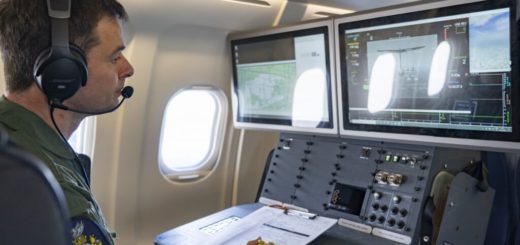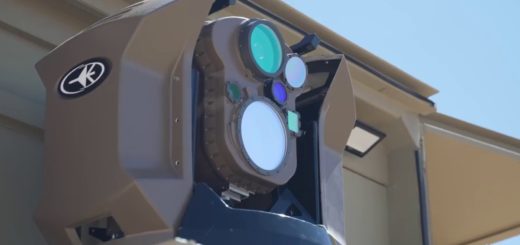What are the defense priorities shaping France’s 2025 Strategic Review?

As Rafale fighter jets roared over the Champs-Élysées for the traditional Bastille Day flypast, France unveiled an updated National Strategic Review (RNS 2025), a blueprint for adapting to what President Emmanuel Macron calls “a new era of high-intensity conflict.”
Published on July 14, 2025, the review outlines 11 strategic objectives, ranging from maintaining a credible nuclear deterrent and ensuring cyber resilience to securing European technological autonomy and preparing the economy for potential conflict.
The announcement comes as Macron confirmed an additional €6.5 billion for the armed forces compared to initial plans, bringing the defense budget to €64 billion by 2027, two years ahead of schedule. This funding boost will necessitate revising the 2024-2030 Military Programming Law (LPM) later in 2025 to support the ambitions outlined in the RNS with tangible resources.
Russia remains the main threat
“We are at a tipping point,” President Emmanuel Macron warned in his introduction to the updated National Strategic Review, citing Russia as “a lasting threat that is being organised and prepared, and which we must be able to face in the future.”
The review underscores this warning with stark figures: Moscow aims to add 300,000 troops, 3,000 tanks, and 300 combat aircraft by 2030, while funneling nearly 40% of its national budget into defense.
Beyond conventional forces, Russia has widened its hybrid toolkit: sabotage operations, disinformation campaigns, election interference, and cyberattacks on health and energy infrastructure. This comes alongside continued large-scale strikes in Ukraine and reliance on Iranian drones and North Korean troops.
Nuclear posture: no arms race, but “strict sufficiency”
The RNS reaffirms that nuclear weapons remain the cornerstone of French strategy but rules out any arms race.
“The use of nuclear weapons is only conceivable in extreme circumstances of legitimate defense,” the document states, emphasizing that France does not seek parity with other powers and adheres to a principle of “strict sufficiency.” Nuclear and conventional forces are presented as complementary, supported by reinforced air and missile defense, long-range strike capabilities, and resilient command networks.
This reaffirmation of sovereignty comes at a time of renewed debate over Europe’s nuclear posture. In May 2025, President Emmanuel Macron said he was open to discussions about deploying French nuclear weapons in other European countries that request them, an unprecedented move for a French head of state.
“Since General de Gaulle, there has always been a European dimension in how we define our vital interests,” Macron said, adding that a formal framework would be laid out in the coming months.
More recently, a joint UK-France statement asserted that while their deterrents remain independent, they can be coordinated, stressing that there is “no extreme threat to Europe that would not prompt a response by both nations.”
The UK and France remain the only nuclear powers in Europe, and their combined deterrents are viewed as a critical component of NATO’s security, particularly amid calls from the Trump administration for European allies to assume greater responsibility for the continent’s defense.
RELATED
France may deploy nuclear weapons in Europe, but only on Macron’s terms
Air power and strike capabilities
To maintain operational superiority, the RNS prioritizes fighter aviation, transport aviation, and deep-strike systems. It calls for larger munitions stockpiles, stronger air and missile defense, improved suppression of enemy air defenses (SEAD) capabilities, and the rapid integration of drones across all domains.
The review also highlights the importance of joint European programs in closing capability gaps and reinforcing strategic autonomy. Among them is the European Long-Range Strike Approach (ELSA), launched in 2024 to deliver indigenous deep-strike capabilities of up to 2,000 kilometers by 2028, reducing reliance on non-European systems and strengthening NATO’s deterrence posture.
By contrast, the Future Combat Air System (FCAS), developed in collaboration with Germany and Spain and often regarded as the cornerstone of future European airpower, receives only a brief mention in the updated RNS.
Yet, its significance remains clear. Recent reports indicate that France has been pushing for a greater share of FCAS work, possibly up to 80% in key segments, to ensure industrial sovereignty and accelerate development timelines.
RELATED
Did France really ask for 80% control of Europe’s next-gen fighter jet program?
Missiles, drones and electromagnetic warfare
The RNS advocates for strengthening anti-drone systems and ground-based air defense, as well as enhancing capabilities for deep strikes, including precision-guided attacks and saturation strikes, to ensure that French forces can succeed in high-intensity engagements.
“It requires France to be capable of managing major armament programmes while simultaneously leading short, agile, low-cost development cycles that make full use of civilian-derived, distributed and networked capabilities to support our armed forces,” the report states.
This parallels the Pentagon’s recent shift toward a ‘Ukraine-inspired’ model, which prioritizes rapid, small-drone deployments developed at pace and scale through partnerships with civilian industry.
RELATED
Pentagon embraces Ukraine-inspired model to boost small drone fielding and use
Space and high-altitude domains
Space is now a fully contested domain. The review recommends accelerating the deployment of low-orbit constellations for secure communications and intelligence by 2029, as well as consolidating image and electromagnetic intelligence capabilities. Ariane 6, which recently entered operational service, is described as a critical element for ensuring autonomous access to orbit.
Earlier this month, France inaugurated its first dedicated military space base in Toulouse, which will host the French Space Command (CDE) and NATO’s Space Centre of Excellence. The facility will eventually house 500 personnel and serve as the hub for space operations, intelligence, and counterspace missions.
By 2030, French forces are also expected to gain very-high-altitude surveillance and detection systems, supported by platforms capable of operating in the stratosphere and beyond.
During the Paris Air Show 2025, the French Ministry of the Armed Forces and the European Space Agency signed agreements with Dassault Aviation to advance VORTEX, a reusable spaceplane concept. The project aims to bolster Europe’s independent access to orbit and could provide France with a new strategic capability for rapid, flexible missions beyond the atmosphere.
RELATED
France opens first military space air base in Toulouse
Looking ahead
The RNS 2025 ends on a resolute note, clearly signaling that France and Europe are stepping into “a new era” characterized by rising threats of high-intensity conflict and sophisticated hybrid attacks. However, beyond the immediate defense needs that are expected to materialize in the new LPM, the review emphasizes long-term strategic autonomy, industrial resilience, and technological leadership. For Europe’s aerospace and defense sectors, the stakes are high… but so too are the opportunities. The post What are the defense priorities shaping France’s 2025 Strategic Review? appeared first on AeroTime.
As Rafale fighter jets roared over the Champs-Élysées for the traditional Bastille Day flypast, France unveiled an updated…
The post What are the defense priorities shaping France’s 2025 Strategic Review? appeared first on AeroTime.






